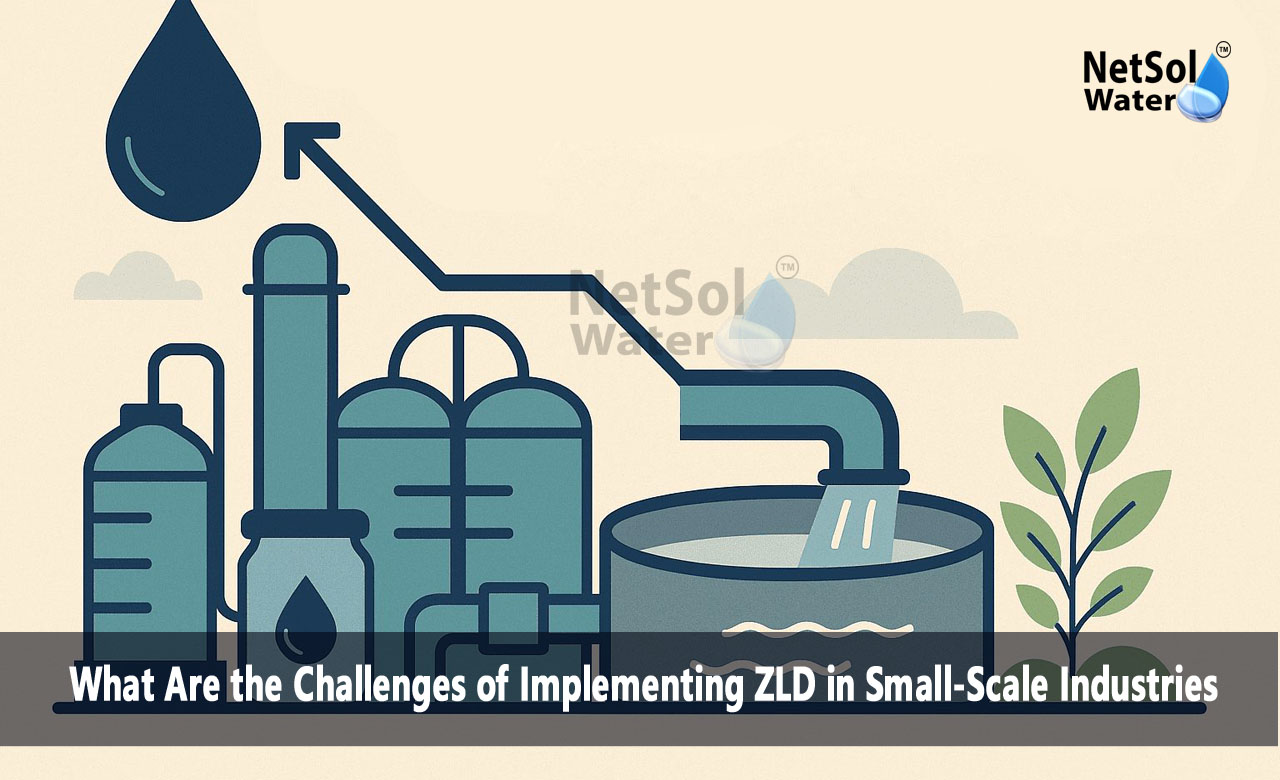What Are the Challenges of Implementing ZLD in Small-Scale Industries?
Zero Liquid Discharge is gaining ground as an objective for industrial wastewater treatment. It assures that there is no liquid waste that is released into the environment, promoting sustainability and resource recovery. ZLD is slowly being implemented by large-scale industries, but small-scale industries cannot. It is important to understand the challenges of implementing ZLD in small-scale industries so that solutions could be made feasible and economical for all.
What Is ZLD and Why Is It Important?
ZLD systems treat industrial wastewater to recycle usable water and convert remaining waste to solid residue. The process allows for reuse of water, prevents pollution, and meets stricter discharge requirements.
For textile, chemical, food processing, and electronics-based small-scale industries, ZLD can reduce water consumption and help conserve local water bodies. While it is useful, many such industries face gigantic barriers in creating and running ZLD systems.
Major Challenges of Implementing ZLD in Small-Scale Industries
Large Capital Investment
Among the challenges of implementing ZLD in small-scale industries is that ZLD is expensive. ZLD can use such high-technology equipment as multi-effect evaporators, crystallizers, reverse osmosis, and energy saving boilers. This infrastructure is bound to be out of bounds of small firms with low budgets.
Operational Complexity
It is not simple to manage ZLD systems. They require trained staff, ongoing monitoring, and timely maintenance. Small industries do not have the financial powers and technical expertise to maintain such complex systems day-to-day. This may lead to system failure or inefficiency, defeating the purpose of ZLD.
Energy Consumption
ZLD processes, especially evaporation and crystallization, consume a lot of energy. For small-scale industries that already deal with unstable power supply or high electricity bills, running a ZLD system continuously is a huge burden. High energy costs make the system economically unsustainable in the long run.
Space Limitations
The second issue in the challenges of implementing ZLD in small-scale industries is the availability of land. ZLD facilities demand room for tanks, reactors, filtration systems, and evaporation ponds in other instances. The majority of the small units are located inclosely packed industrial estates with minimal available area to place full-sized systems.
Insufficiency of Trained Manpower
Skilled technicians, chemical experts, and equipment operators are needed to operate and maintain ZLD plants. Small industries will probably not have such people. This creates inefficient system operation, unsafe waste handling, or dependence on expensive outside consultants.
Solid Waste Disposal
Even with no discharge of liquids, ZLD facilities produce solid wastes or sludge. Its safe disposal, especially when it contains poisonous chemicals, can be costly and laborious. Small units largely do not have arrangements with authorized waste collectors, and thus their tribulations are more.
Regulatory Pressures Without Support
Environmental regulators may impose ZLD requirement, but not offer much monetary or technical support to small industries. It can be afforded by big companies, but small companies are forced to shut down or go underground and get penalized.
Technology Adaptability
Not all ZLD technologies are suitable for each industry type or effluent quality. Selecting the right system that is suitable for a small business's specific process waste is complex and has to be carried out with the counsel of professionals, access to whom many small businesses lack.
Potential Solutions to Overcome These Challenges
While there are challenges of implementing ZLD in small-scale industries, there are solutions through which they can go ahead:
· Standard ZLD Plants: Shared ZLD plants in industrial estates can reduce costs and land.
· Government Subsidies and Incentives: Offering financial assistance, low-interest loans, and tax holidays can ease the investment burden.
· Training and Support Programs: Offering training to small-scale operators can create technical expertiserequired.
· Modular ZLD Systems: Creating compact and expandable ZLD units can allow systems to be accommodated in small spaces and narrow budgets.
· Public-Private Partnerships (PPP): Cooperative efforts of industries, government, and private solution providers can make ZLD more available.
Conclusion
The challenges of implementing ZLD in small-scale industries are cost, operational complexity, and lack of infrastructure. Regardless, small industries can also progress to a zero-liquid-discharge era with appropriate support systems, shared facilities, and innovative measures. It is more of an issue of our environmental safety, as well as promoting wise industrial expansion not only to afford more firms access to ZLD.
Do you need an advice or assistance on selecting the best water and waste water treatment unit? We have solutions for all your problems!
Let us know your problem, our experts will make sure that it goes away.
For an assistance or related query,
Call on +91-9650608473
Or write us at enquiry@netsolwater.com



